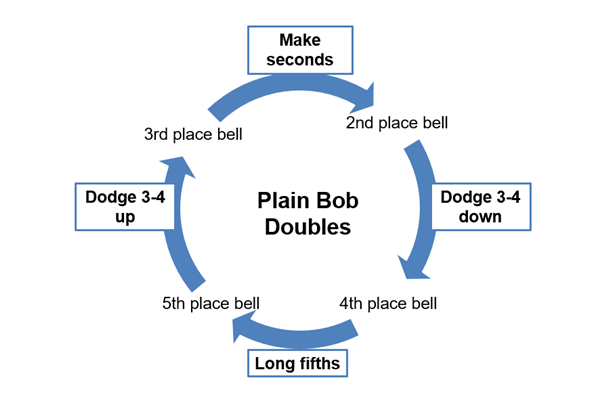Method Toolboxes for ringers
Completion requirements
8. Plain Bob Doubles Toolbox
8.1. The plain course explained
 |
Method structureThe blue line of Plain Bob Doubles is shown on the left, with the treble coloured red and the second coloured blue. It is four leads long. The treble plain hunts to fifths and back The working bells ring a cycle of work – making seconds, dodging 3-4 down, making long fifths and dodging 3-4 up.
Starts
Treble signposts
|
Tip
In the plain course, either the treble or one other bell will take you off the lead. This is your after bell. If you are ringing the 3 this will be the 2.
Cribsheet
Download the Plain Bob Doubles cribsheet for further study or for use in the tower.

